We’d like to remind Forumites to please avoid political debate on the Forum.
This is to keep it a safe and useful space for MoneySaving discussions. Threads that are – or become – political in nature may be removed in line with the Forum’s rules. Thank you for your understanding.
Dispute Resolution Hearing 26 March @ Huddersfield County Court NPML/Gladstones
Comments
-
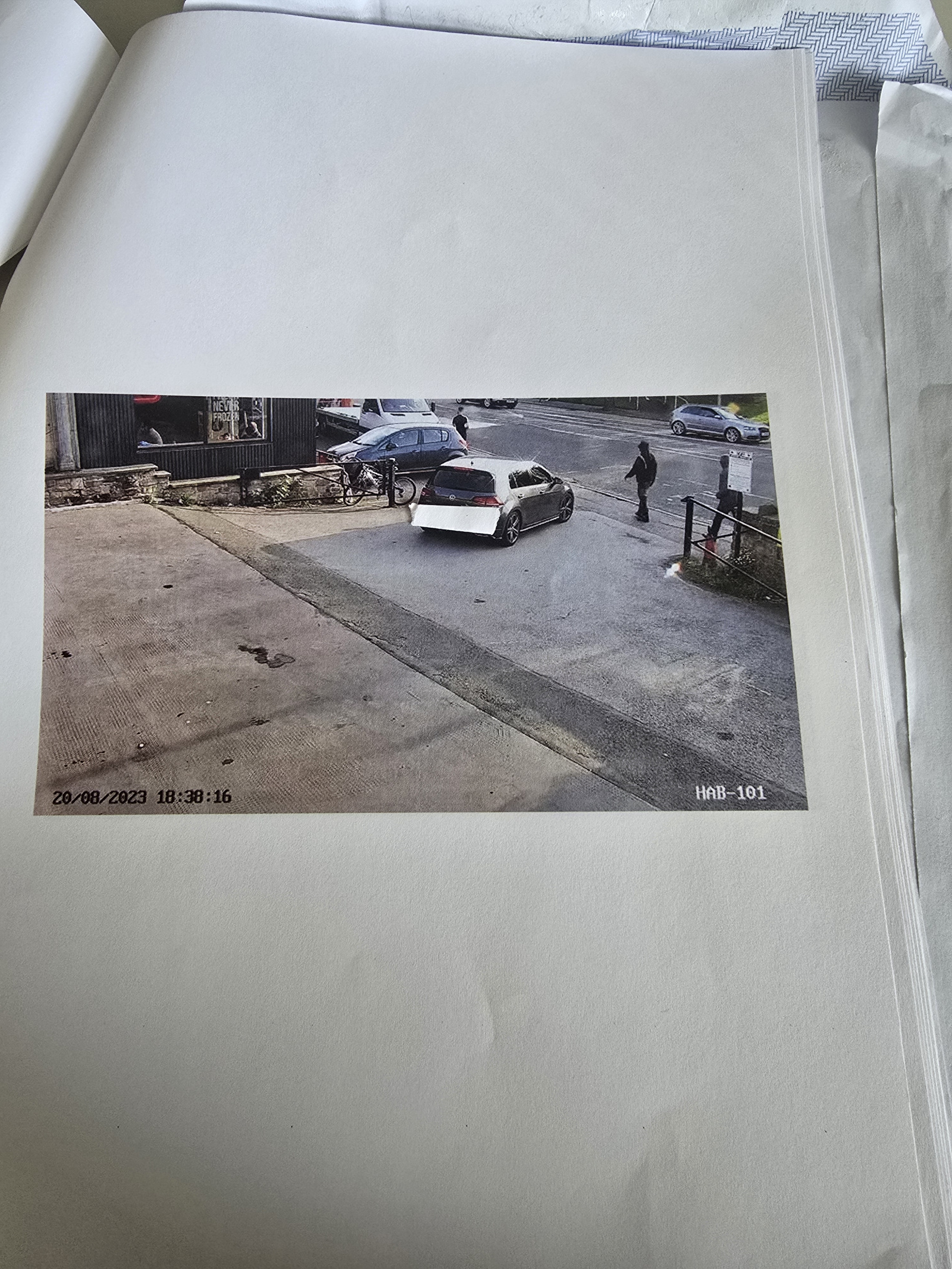
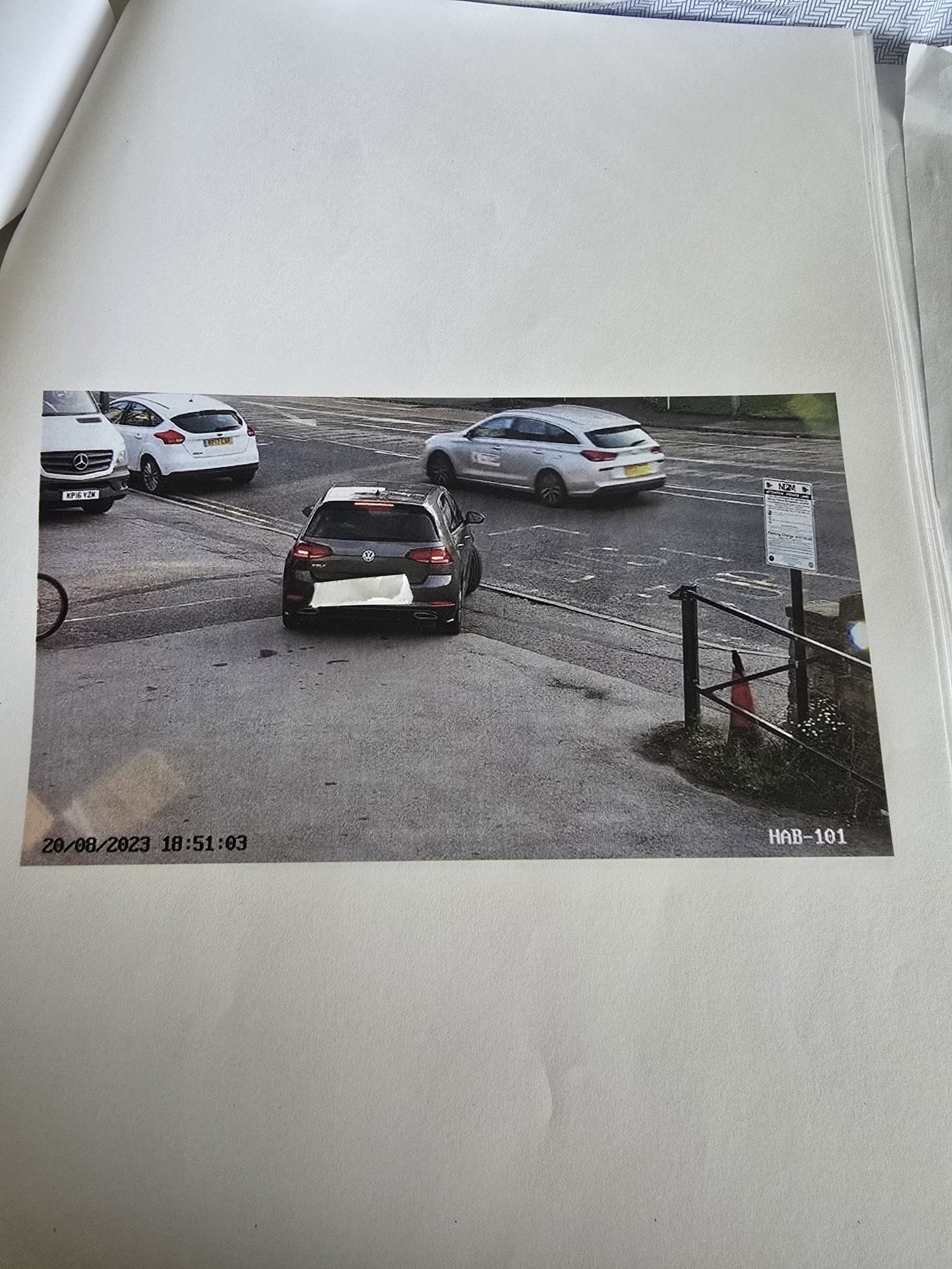
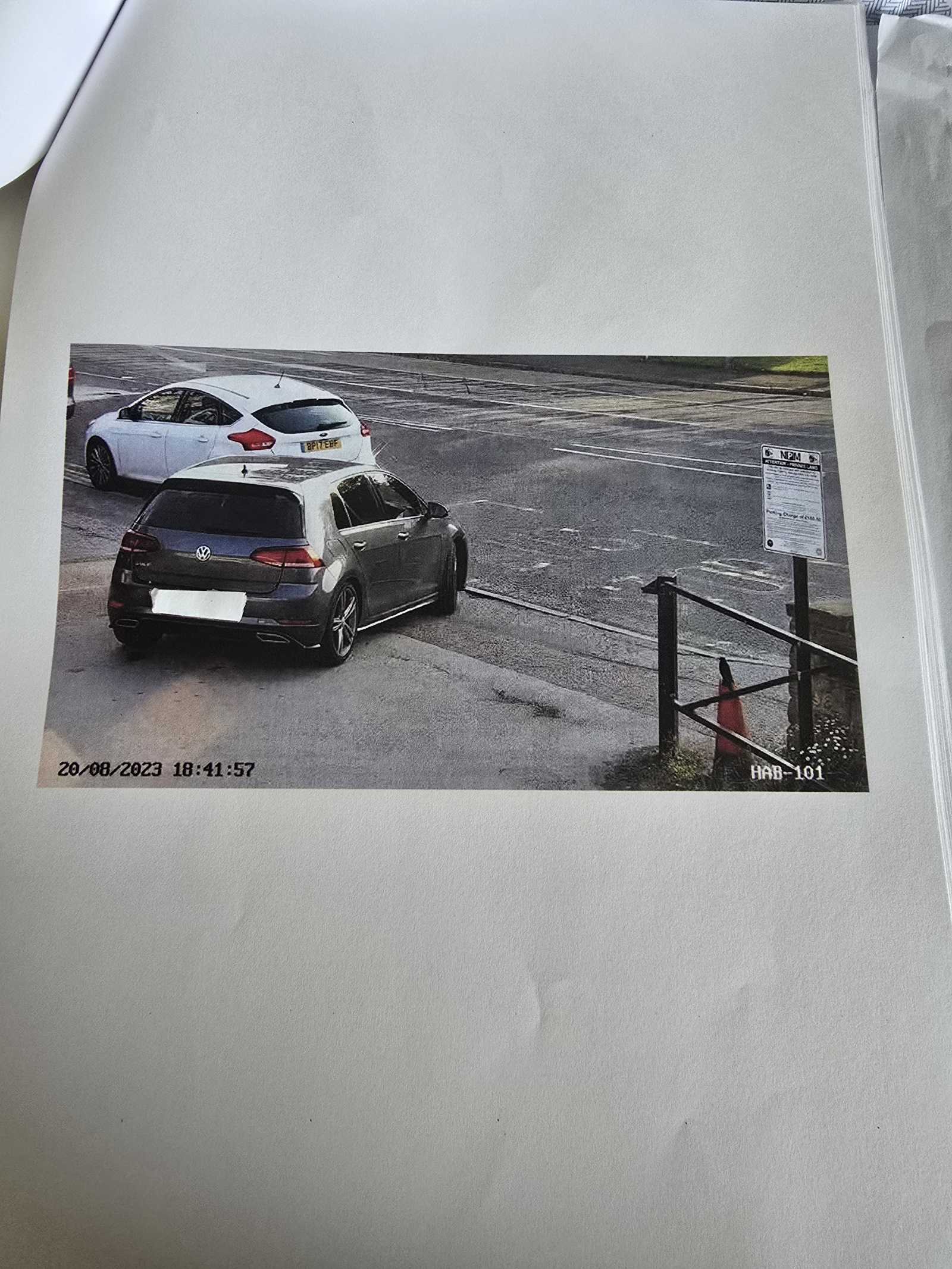
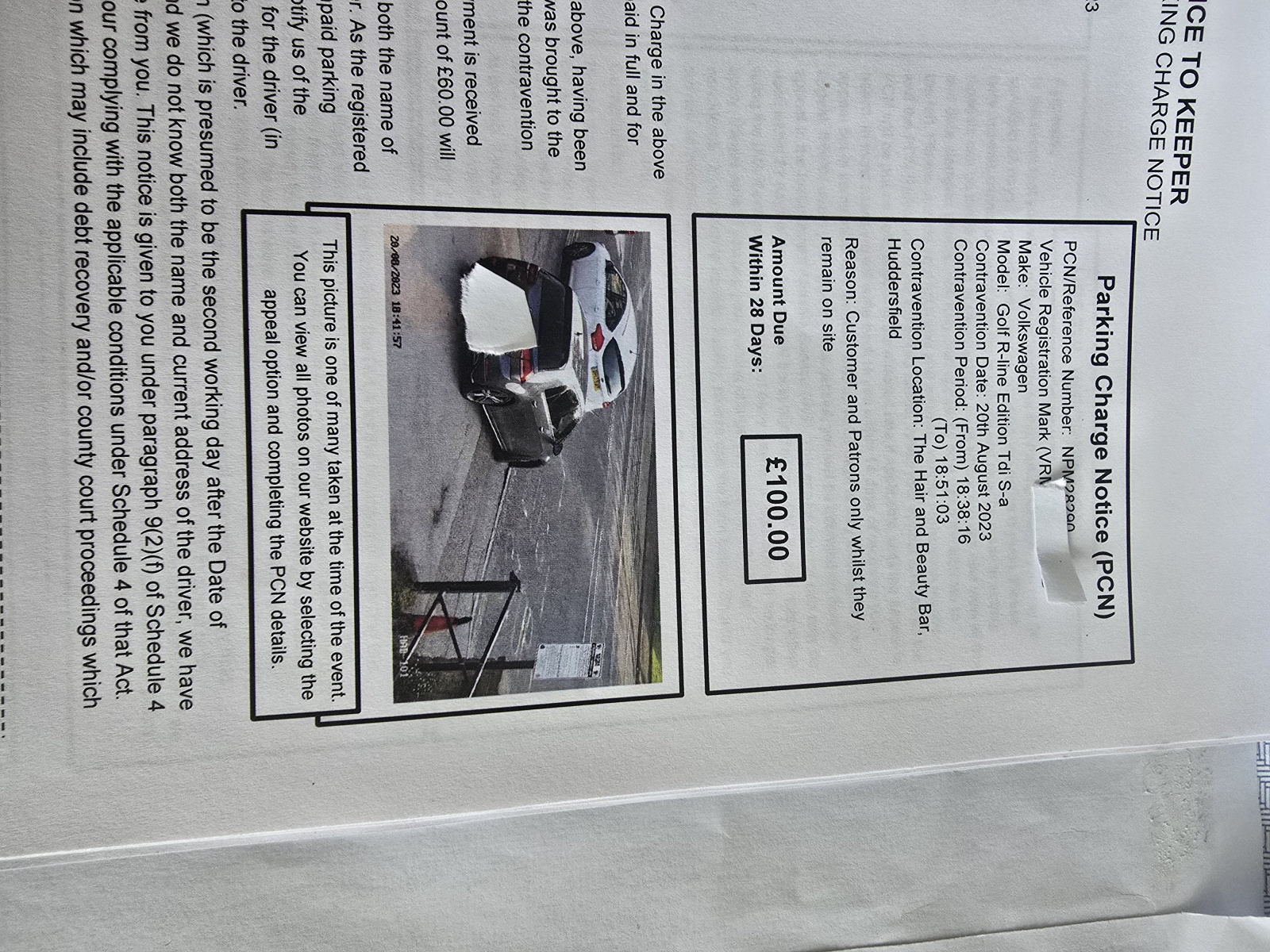
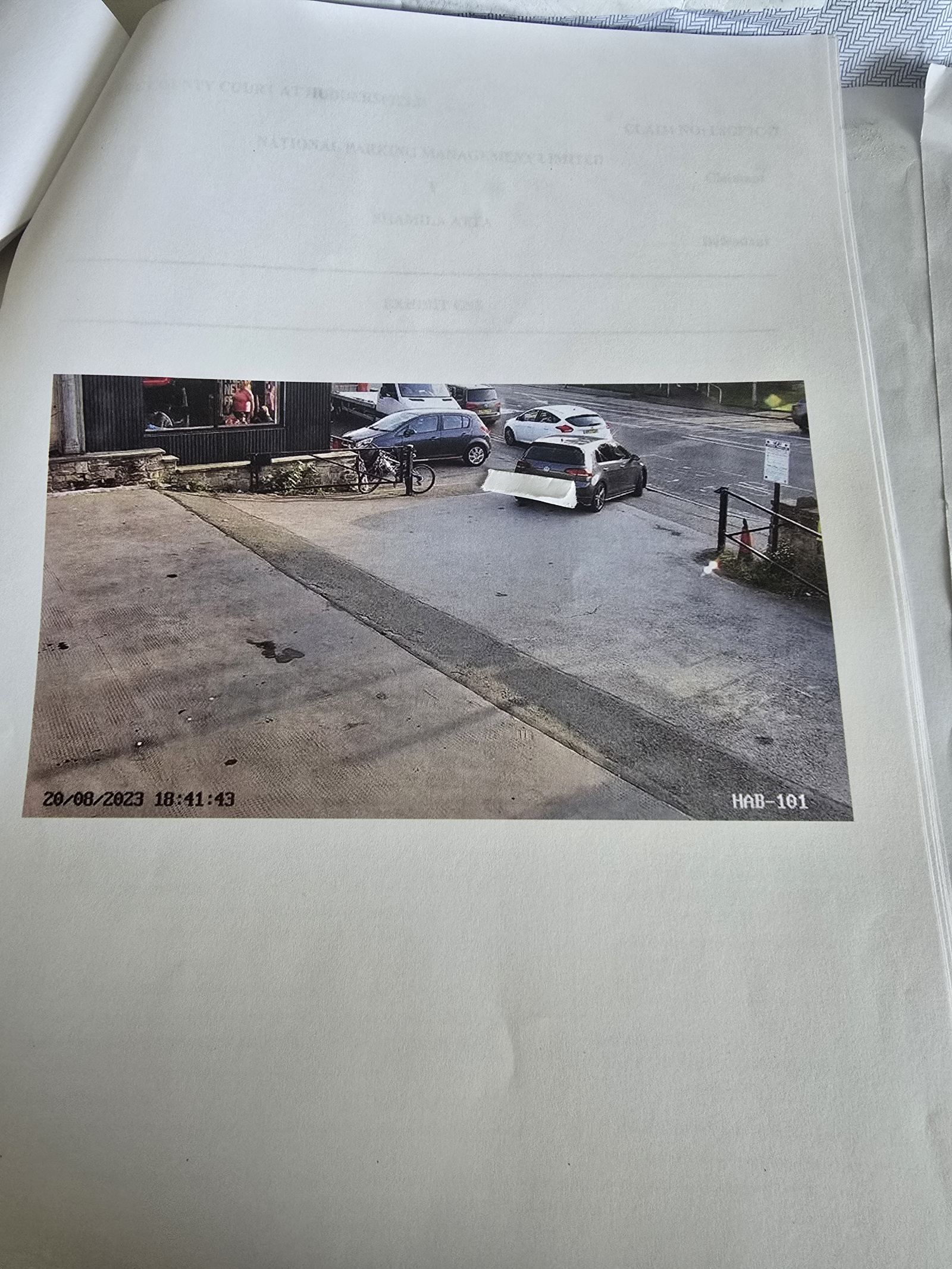
Gladrags really are a piece of something, drafting a fraudulent statement and entering evidence which shows on their own cctv "stills" that the second blue sign wasn't there.
At no point did the driver get out of the car, it was the passenger, they have screen grabs of passenger getting out of the back door and then getting back in the car. They have put in the WS, the driver would have seen the signs if they got out of the car!!! Madness. In total the car was at the entrance for 13 mins to go pick up some food from the takeaway next door. It was a Sunday and the post office and beauty salon were both shut, why did they have their gates open!!
0 -
What is the best witness statement to use ?0
-
PRIVATE 'PCN'? DON'T PAY BUT DON'T IGNORE IT (except N.Ireland).
CLICK at the top or bottom of any page where it says:
Home»Motoring»Parking Tickets Fines & Parking - read the NEWBIES THREAD1 -
Should I be concerned about this last clause 20 and 21 of the "landowner agreement" as I've used the arguments in the example witness statement about them not having any legal standing to litigate in their own name.
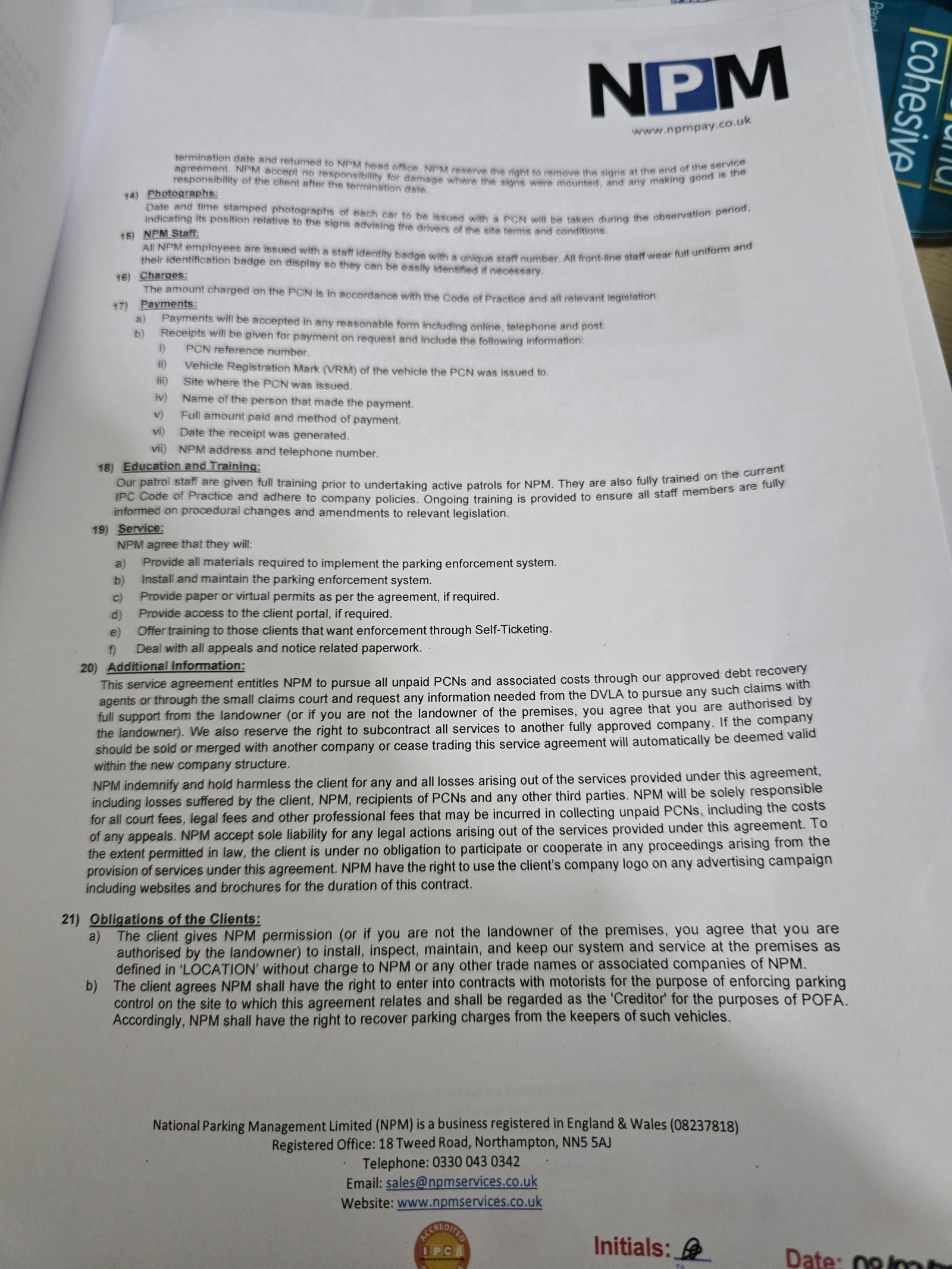
@LDast @Coupon-mad @KeithP0 -
1. am the Defendant against whom this claim is made. The facts below are true to the best of my belief and my account has been prepared based upon my own knowledge and honest belief.
2. In my statement, I shall refer to Exhibits within the evidence supplied with this statement, referring to page and reference numbers where appropriate. My Defence is repeated and I will say as follows:
3. It is denied that any conduct by the driver was in breach of any term. Further, it is denied that this Claimant (understood to have a bare licence as agents) has standing to sue or form contracts in their own name. Liability is denied, whether or not the Claimant is claiming 'keeper liability'. I deny that the Claimant is entitled to relief in the sum claimed, or at all.
Facts and Sequence of events
4. Date and time of the incident: It is admitted that on the material date, I was the registered keeper of the vehicle with the registration number xxxx but was not the driver of the vehicle. There is an adjacent fast-food establishment nearby which the passenger of the vehicle got out of the car to collect food. The driver of the vehicle never left the vehicle and was stationary outside the entrance of the land in question. The driver left shortly afterwards and parked directly outside the fast food establishment.
5. The vehicle was never “parked” I draw to the attention of the Judge of a persuasive Appeal judgment which called into question the definition of “parking”. In Jopsen v v Homeguard Services Ltd [2016] (Ref B9GF0A9E), paras 19-21 HHJ Harris points out that the “concept of parking, as opposed to stopping, is that of leaving a car for some duration of time beyond the that needed for getting in or out of it, loading or unloading it [….]” this judgement supports my asserting that the driver of the vehicle never parked the vehicle on the land. (Exhibit SA01)
6. Parliament agrees. The Claimant has ignored the Parking (Code of Practice) Act 2019 first published in February 2022, due to be finalised after a judicial review delay engineered by the Parking Industry, who did not object to the following clause 2.24 which remains unchanged:
The definition of a “parking period” specifically excludes dropping off/picking up passengers. Clause 2.24 defines a parking period as the length of time that a vehicle has been parked i.e. left stationary otherwise in the course of driving, after any relevant consideration period has expired (excluding instances where the driver has stopped to enable passengers to leave or enter the vehicle). This is not the period between a vehicle being recorded as entering or departing controlled land.
7. No authority to issue a Parking Notice: The Claimant pursues a claim for the driver not being a customer of the Hair and Beauty Bar. It is denied the Claimant has authority to issue a parking notice as described in the Claimant’s WS at paragraph 4-7. The Claimant relies upon the authority granted to them under the terms of the Landowners Agreement as alleged at paragraph 5 of the WS and that the Claimant is authorised by the Landowner to manage and enforce the parking on the land. The Claimant exhibits a copy of the site map at GS3 which sets out the Claimant’s parking boundary and areas where signage is to be erected for which parking is to be enforced.
8. Exhibit GS1 is not a “Landowner Agreement” between the Landowner and the Claimant, but it is in fact a “Parking Service Level Agreement” between the Claimant and Gurdial Singh Samra and Balbir Kaur at the Hair and Beauty Bar HD1 6LQ. The Agreement remains silent as to who the Landowner is.
9. This makes the agreement presented not factually correct with the Claimant’s WS that the agreement is between the Landowner and the Claimant; the Claimant’s standing and rights to manage and enforce the regulations in situ at the site, are simply hearsay without evidence that they have the Landowners authority. I have seen no such evidence of this legal authority or a contractual arrangement between the Claimant and the Landowner as alleged at paragraph 5 of the WS.
10. Furthermore, the Claimant’s own evidence quite clearly shows that the vehicle was observed to be outside the parking boundary as provided within the site map and outside the confines of the alleged agreement that was in place between the Claimant and Gurdial Singh Samra and Balbir Kaur. The vehicle is observed to be on a public footpath which is not land owned by the Landowner for which an agreement can be in place for the Claimant to enforce.
11. Given that the vehicle was observed to be stationary in an area upon which the Claimant had no agreement with the alleged Landowners to enforce, the Claimant therefore has no contractual basis whatsoever to state a contract was formed between the Claimant and the driver.
12. There is no evidence within the agreement that the Claimant has been expressly authorised by the landowner to delegate the rights claimed by the Claimant. Without such evidence, the agreement presented does not substantiate the claimant's claim to enforce parking charges on the land.
Inadequate signage
13. I note from the stills at Exhibit GS3 dated 21 September 2023 one month after the alleged incident, there is a second sign erected which was not there on the photographic evidence dated 20 August 2023 supplied by the Claimant.
14. The Claimant at Exhibit GS3 has provided photographs showing outside of the Post Office and the Hair and Beauty bar dated 27 March 2023, some 5 months before the alleged contravention. Another photograph within Exhibit GS3 dated 21 September shows completely different signs. The Claimant has not provided any evidence to confirm that the photograph of the signs they purport to be at the site are the same signs or indeed any signs were present at the time of the alleged contravention and the Claimant is put to strict proof thereof.
15. Based on the Claimant’s own evidence I have observed a lack of clear and visible signage regarding parking regulations. The signs that are present are placed in obscure locations, making them difficult to notice, including one that was positioned on an erected gate to the right of the entrance far from a typical line of sight and printed in such small type as to be illegible unless very close.
16. The alleged landowner agreement at clause 13 (b) quite clearly states:
“All signs conform to the code of practice and POFA, and will be positioned so at least one sign is visible and accessible from anywhere that a vehicle could park on the site and at the entry point if appropriate. Where the site can be closed with gates, signs will be visible from outside the gate.”
17. There is no “visible sign placed” at the entry of the site, in fact any such terms and conditions of the sign cannot be read before entering the site. Further, the signage featured very small text, making the terms and conditions impossible to read from a reasonable distance, particularly whilst still in the car. The poor placement and legibility of these signs makes it extremely difficult for anybody to be aware of or comply with the parking rules which can be seen in the photographs exhibited in the Claimant’s WS at Exhibt GS4. They give no information whatsoever as to the nature of the terms and conditions, merely that terms and conditions apply. This is in stark contract to the highly visible, clear and legible signs in The Beavis Case.
Contractual Element of signs
18. Failure to Comply with CPR PD 16(7.5): The claim is for an alleged breach of contract that was supposedly entered into by conduct. CPR PD 16(7.5) specifically states:
“7.5 Where a claim is based upon an agreement by conduct, the particulars of claim must specify the conduct relied on and state by whom, when and where the acts constituting the conduct were done.”
19. The PoC do not adhere to this requirement. They fail to specify the exact conduct relied upon to establish the contract, as well as the time, location, and party responsible for the acts constituting the alleged conduct. The omission of these essential details renders the PoC inadequate for a claim based on an alleged agreement by conduct.
20. The Claimant’s WS states that the driver did not exit the vehicle. At paragraph 10 of the WS, it is stated signs were displayed at various points and that the Driver would have had the opportunity to read and understand them. If the Driver did not exit the vehicle at any point, it seems inconceivable that the Driver would have read and accepted the aforementioned “Terms and Conditions”.
21. The Claimant contends that a contract was formed between the driver and the Claimant based on the terms displayed on the sign. For a contract to be formed, there must be a clear and unequivocal offer capable of being accepted by conduct. If the Driver has not exited the vehicle to “consider the signs” how can a contract be formed.
22. At paragraph 31 of the Claimant’s WS states:
All that was required was for the Driver to exit the vehicle to consider the signs.
23. In light of these issues, the Claimant has failed to establish that a valid and enforceable contract was formed between the driver and the Claimant, and the authority to issue the Parking Charge Notice is questionable. The prohibitive nature of the sign and the lack of a direct agreement with the landowner significantly undermine the Claimant's position, and the claim should be dismissed accordingly.
Hidden Terms
24. The £100 penalty clause is positively buried in small print, as seen on the signs in evidence. The purported added (false) 'costs' are even more hidden and are also unspecified as a sum. Their (unlawful, due to the CRA Schedule 2 grey list of unfair terms) suggestion is that they can hide a vague sentence within a wordy sign, in the smallest possible print, then add whatever their trade body lets them, And the driver has no idea about any risk nor even how much they might layer on top. Court of Appeal authorities which are on all fours with a case involving a lack of ‘adequate notice’ of a charge, include:
a. Spurling v Bradshaw [1956] 1 WLR 461 (‘red hand rule’) and
b. Thornton v Shoe Lane Parking Ltd [1970] EWCA Civ2
are both leading authorities confirming that a clause cannot be incorporated after a contract has been concluded; and
c. Vine v London Borough of Waltham Forest [2000] UKCA, where Ms Vine won becauseit was held that she had not seen the terms by which she would later be bound, due to "the absence of any notice on the wall opposite the parking space".
25. It is quite clear from the Claimant’s photographic evidence and WS that the vehicle was stationary and not parked as the driver did not exit the vehicle, furthermore it shows that the driver would not have seen any of the signs within the site given the position of where the vehicle was stationary which is quite clearly outside of the site / parking boundary and on a public pavement.
26. No authority to obtain KADOE details from DVLA given that the vehicle was not parked within the parking boundary within which the Claimant was entitled to enforce, the Claimant had no authority to obtain the Registered Keeper’s details from the DVLA. Under paragraph B2.3 of the KADO contract:
Before making each request for Data, the Customer shall gather evidence to demonstrate that it has Reasonable Cause to request that Data. This evidence may include scans, images, photographs, correspondence and any other evidence that the Customer may rely on to show its compliance with the requirements of this Contract and of the relevant Accredited Trade Association’s Code of Practice.
27. The Claimant has failed to gather evidence which demonstrates that it had Reasonable Cause to request Data from the DVLA.
28. Further evidence provided by the Claimant shows that the signs state no grace period applies. Recent news coverage has shown many parking firms have found to be foul of using a “no grace period” or a “5 minute rule” resulting in exorbitant parking charges where they were not given sufficient time to observe the parking rules and given time to leave the land or not allowing sufficient time to make payment within the 5 minute rule. Given the coverage of this appalling practice carried out by parking firms in particular a claim in the sum of £1,906 was soon dropped and as of 17 February 2025 the Private Parking Code of Practice have stated that private parking operators using ANPR or CCTV camera monitoring equipment should no longer receive a parking charge notice under the “5 minute rule”.
0 -
The Claim should be struck out
29. I draw to the attention of the Judge that there are two very recent and persuasive Appeal judgments to support dismissing or striking out the claim. I believe that dismissing this meritless claim is the correct course, with the Overriding Objective in mind. Bulk litigators should know better than to make little or no attempt to comply with the Practice Direction. By continuing to plead cases with generic auto-fill unspecific wording, private parking firms should not be surprised when courts strike out their claims using powers pursuant to CPR 3.4, based in the following persuasive authorities (I append transcripts of both - plus multiple area court 'strike outs' of parking claims that reflect these authorities.
30. The first recent persuasive appeal judgment in Civil Enforcement Limited v Chan (Ref. E7GM9W44) would indicate the POC fails to comply with Civil Procedure Rule 16.4(1)(e) and Practice Direction Part 16.7.5. On the 15th August 2023, in the cited case, HHJ Murch held that 'the particulars of the claim as filed and served did not set out the conduct which amounted to the breach in reliance upon which the claimant would be able to bring a claim for breach of contract'. (Exhibit SA01)
31. The second recent persuasive appeal judgment in Car Park Management Service Ltd v Akande (Ref. K0DP5J30) would also indicate the POC fails to comply with Part 16. On the 10 May 2024, in the cited case, HHJ Evans held that 'Particulars of Claim have to set out the basic facts upon which a party relies in order to prove his or her claim'. (See Exhibit SA01).
32. Non-Compliance with CPR 16.4 I respectfully submit that, before proceeding with the hearing, the Court should consider a Preliminary Matter: striking out the claim due to the Claimant's failure to comply with CPR 16.4. The Particulars of Claim (PoC) do not meet the requirements under CPR 16.4(1)(a) and (1)(b), and thus also fail to satisfy the requirements under CPR 16.4(2). The Claimant’s Witness Statement (WS) attempts to justify the deficiencies by referring to Practice Direction 7 and CPR 1, but this does not remedy the fundamental inadequacies in the original PoC.
33. Failure to Comply with CPR 16.4(1)(a): The PoC do not provide a concise statement of the facts on which the Claimant relies. The vague allegation of breaching terms and conditions does not specify the facts constituting the alleged breach, nor does it detail how or when the breach occurred, or the specific terms allegedly breached. There is no explanation of how the amount claimed was calculated. This fails to meet the requirement for a concise statement of facts that enables the Defendant to understand the case.
34. Failure to Comply with CPR 16.4(1)(b) and (2): The Claimant seeks interest under section 69 of the County Courts Act 1984 but does not comply with CPR 16.4(1)(b) and (2), which require the details of the interest sought. While the PoC state the interest rate (8% per annum) and daily rate (£0.02), they do not indicate the date from which interest is claimed, the date to which it is calculated, or the total amount of interest claimed up to that date.
35. Furthermore, these additional costs appear to be arbitrary and penal in nature. Under established law principles, such as ParkingEye Ltd v Beavis [2015] UKSC67 (The Beavis Case), parking charges must either be a genuine pre-estimate of loss or commercially justified. In this case, the additional £70 is neither justified nor explained. (Exhibit SA01)
36. The claimant has provided no breakdown or explanation of how this amount was calculated or why it is appropriate. It can only be viewed as a punitive charge designed to penalise the Defendant, which is contrary to established legal principles that prohibit excessive and unfair contractual penalties.
37. The Claimant’s demand for additional costs of £70 per PCN is entirely baseless. It is not supported by any clear contractual term, it violates the CRA's requirements for fairness and transparency, and it constitutes an unlawful penalty charge. The court should strike out this portion of the claim as unenforceable.
38. I believe the Claim should be struck out and should not have been accepted by the CCBC due to a represented parking firm Claimant knowingly breaching basic CPRs. The specifics of this case lack clarity, as no explicit statement has been provided to indicate which specific term of the alleged contract was purportedly breached.
Response to the Claimant’s Arguments in Their WS
39. The Claimant’s WS argues that the claim was issued via the County Court Business Centre, and that Practice Direction 7 are only permitted to insert brief details on the Claim Form. However, this does not override the fundamental requirement under CPR 16.4 for the PoC to set out a clear and concise statement of facts. It cannot be right that the fundamental basic rule that Particulars of Claim must set out the case which a Defendant has to meet can somehow be swept away by the character limit imposed by the MCOL system. If the Claimant really cannot fit that into the 1080 character limit, then the remedy is to serve detailed Particulars of Claim.
40. The reference to Practice Direction 7C section 5.2A does not excuse the Claimant’s failure to meet the requirements of CPR 16.4. While it may be true that attaching documents is not mandatory under Practice Direction 7C, the PoC still must satisfy the standard for adequately pleaded claims. The Claimant’s argument effectively suggests that the rules allow for a lower standard in online claims, which is not supported by the CPR or relevant case law.
41. Furthermore, the Claimant may argue that they have subsequently addressed the deficiencies in their WS. However, this does not retrospectively cure the original non-compliance. The Civil Procedure Rules clearly require the PoC to include sufficient detail from the outset, and not to be supplemented later in an attempt to remedy shortcomings. The purpose of the PoC is to give me adequate notice of the case they need to answer and to enable the preparation of a Defence at the earliest opportunity. Allowing the Claimant to rely on their WS to fill in gaps would undermine this purpose and the principles of fairness, procedural justice and the Overriding Objective.
Misapplication of CPR 1
42. The Claimant’s reference to CPR 1, which outlines the Overriding Objective to deal with cases justly and at proportionate cost, does not excuse non-compliance with CPR 16.4 and CPR PD 16(7.5). Ensuring proportionality does not allow for inadequate particulars that compromise my ability to understand the claim. The Overriding Objective requires fairness to both parties, and the failure to provide properly pleaded PoC undermines this principle.
43. The Claimant's PoC were deficient from the outset, failing to comply with CPR 16.4 and CPR PD 16(7.5), thereby placing the Defendant at a disadvantage by not providing sufficient detail. The subsequent attempt to address these shortcomings in the WS does not retrospectively cure the original non-compliance. Given these deficiencies, I respectfully submit that the Court should strike out the claim.
Claimant’s Assertion Regarding My Defence
44. The Claimant alleges in their Witness Statement that I have filed a "generic Defence downloaded from the internet" and suggests that my Defence lacks substance or is disingenuous. I respectfully submit that this assertion is unfounded and overlooks the procedural and legal context in which my Defence was prepared. The validity of a Defence is determined by its legal basis, not by whether it addresses procedural issues or raises common legal points.
45. Firstly, the Claimant's assertion that I did not engage with their appeals process does not affect the substance or merit of my Defence. There is no requirement under the Civil Procedure Rules to pursue an internal appeal before defending a claim in court. My right to challenge the claim remains intact regardless of whether I engaged with the Claimant's appeals process, and this has no bearing on the validity of my Defence. The court is concerned with the merits of the legal arguments, not the extent of my prior engagement with the Claimant’s appeals procedures.
46. Secondly, the primary basis of my Defence is that the Particulars of Claim (PoC) provided by the Claimant were woefully deficient and failed to comply with CPR 16.4. The PoC did not include a concise statement of the facts or sufficient detail about the basis of the claim, leaving me unable to understand the case I was required to answer. This is a legitimate and substantive challenge to the adequacy of the claim. The Claimant's failure to provide compliant PoC is a procedural issue that directly affects the fairness of the proceedings and my ability to prepare a detailed response.
47. The Claimant’s suggestion that my Defence is a "template" does not diminish its validity. Ironically the statement drafted by the paralegal is quite clearly a “template” witness statement which is routinely used by bulk litigators.
48. Legal arguments addressing procedural deficiencies, such as the non-compliance with CPR 16.4, are entirely appropriate and can be raised in any Defence, whether they resemble arguments used in other similar cases or not. The hypocrisy in the Claimant's assertion is evident, as their PoC and Witness Statement themselves are a "template," albeit a particularly deficient one, commonly seen in bulk litigation claims. The fact that the Claimant's PoC and Witness Statement contain deficiencies shared across many cases only underscores the legitimacy of my challenge. It is ironic for the Claimant to criticise my Defence as a "template" when their own PoC and Witness Statement consist of generic, auto-filled wording that fails to comply with procedural requirements. A Defence that addresses relevant procedural issues is not rendered insubstantial simply because similar procedural failings are encountered frequently.
49. Moreover, the Claimant's contention that I did not raise challenges at earlier stages, such as during the debt collection process or in response to a Notice of Keeper / Parking Charge Notice is irrelevant to the merits of my Defence. The timing or lack of previous objections does not preclude me from challenging the claim now. The Claimant’s failure to provide sufficient detail in the PoC prejudiced my ability to engage meaningfully with any earlier correspondence and does not negate my right to a fair hearing on the issues now raised.
50. The substance of a Defence lies in the legal grounds it presents. In this case, my Defence is based on the Claimant's failure to provide adequate PoC, which is a significant procedural deficiency under CPR 16.4. The Claimant’s dismissal of this as "disingenuous" or a "waste of time" does not change the fact that the PoC must comply with the rules to ensure a fair and just legal process. The court has a duty to consider whether the Claimant’s PoC adequately set out the case, and the procedural fairness owed to defendants who must understand and respond to the allegations against them.
51. In conclusion, the Claimant's assertion that my Defence lacks substance is without merit. The focus on procedural deficiencies is a direct response to the Claimant's failure to comply with the rules governing litigation, which has impacted my ability to prepare a more detailed Defence. The issues raised in my Defence are therefore legitimate and warrant the Court's consideration.
0 -
Hearsay evidence
52. The Claimant’s 'witness' is a paralegal employed by the Claimant’s solicitors and has no direct knowledge of the actual events that form the basis of the claim. Any evidence provided by this individual is second-hand, supposedly relying entirely on information supplied by the Claimant, and thus cannot carry the same weight as testimony from someone who witnessed or was directly involved in the incident.
53. While the Civil Evidence Act 1995 allows hearsay evidence in civil proceedings, it is required to be given less weight, especially when it comes from someone with no firsthand knowledge. Furthermore, under CPR 32.2, the court has the discretion to exclude hearsay evidence when it is of limited probative value. In this case, the witness provides only second-hand information from the claimant and cannot be considered reliable or probative.
54. The Claimant's WS fails to comply with CPR Practice Direction 32, paragraph 18.2, as it does not clearly distinguish between what the witness knows firsthand and what has been provided to them by others. It is evident that the individual providing the statement, being a paralegal with no direct involvement in the events, relies on information provided by their client and lacks personal knowledge of the facts. As a result, this statement amounts to hearsay, which weakens its credibility.
Costs Assessment
55. Given the significant time and effort required to Defend against this unjust claim, I respectfully request that the court consider awarding costs under CPR 27.14(2)(g). I have spent considerable time researching, preparing and drafting the Defence, preparing and drafting this witness statement and attending the hearing. My estimate time incurred is as follows at band 2 rate of £139/hour for summary assessment of court costs:
a. Research and preparation of defence: 3 hours = £417
b. Research and preparation of witness statement: 5 hours = £486.50
c. Time away from work as currently self employed : half day 3.5hours £175
d. Travel expenses (return journey to hearing): £8.90
e. Preparation for dispute resolution hearing listed on 26 March 2025 at 2pm approx 2 hours
Total costs £1,365.40
I request that the court considers the above time incurred at the reasonable rate in its Judgment, given the Claimant’s unreasonable behaviour in pursuing this claim plus interest at 8% or some other such rate as deemed appropriate by the Court pursuant to section 69 of the County Courts Act 1984.
Statement of Truth
I believe that the facts stated in this witness statement are true. I understand that proceedings for contempt of court may be brought against anyone who makes, or causes to be made, a false statement in a document verified by a statement of truth without an honest belief in its truth.
0 -
thanks for these, I have used some of the arguments presented, please have a read and let me know whether it is good to go before I send it of tomorrow with transcripts and judgments of other strike out claims as part of my exhibitsCoupon-mad said:0 -
As far as I can see, you are only exhibiting one piece of evidence - Exhibit SA01 - but you do mention it four times.
Is that correct?1 -
Thats correct, i can rename to 02,03,04 instead ?KeithP said:As far as I can see, you are only exhibiting one piece of evidence - Exhibit SA01 - but you do mention it four times.
Is that correct?0
Confirm your email address to Create Threads and Reply

Categories
- All Categories
- 352.2K Banking & Borrowing
- 253.6K Reduce Debt & Boost Income
- 454.3K Spending & Discounts
- 245.3K Work, Benefits & Business
- 601K Mortgages, Homes & Bills
- 177.5K Life & Family
- 259.1K Travel & Transport
- 1.5M Hobbies & Leisure
- 16K Discuss & Feedback
- 37.7K Read-Only Boards



